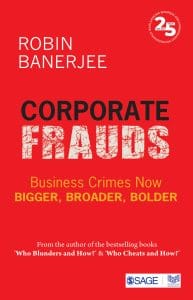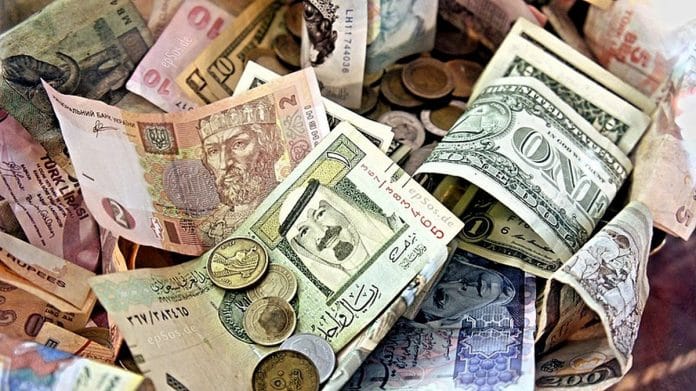Juxtaposing the connections with the well-heeled, the bank maintained secret accounts for hordes of notorious people and institutions, including the Iraqi President Saddam Hussein, Panamanian ruler Manuel Noriega, drug dealers and arms traders
It can be exceptionally alarming when we trust our money with a bank only to realize that the money managers were scoundrels.
Let me tell you a story which took place in the 1970s and 1980s. Needless to mention, versions of this con game keep appearing from time to time, ruining the life savings of millions of trusting common folks.
This story belongs to the very unscrupulous Bank of Credit and Commerce International (BCCI), which took money from more than a million depositors from across the globe, to become a personal money bank for its Arab owners and Pakistani managers. In addition, to its favoured customers, millions of dollars were lent without asking for proper documentation and in violation of bank’s lending thresholds. Fake front customers were placed to mask the real borrowers.
Also read: CBI unable to file over 100 high-value bank fraud cases since 8 states withdrew probe consent
The hoodwinking continued in several areas. Teeming and lading schemes were widely followed. Deposits from fresh customers were adjusted against unpaid interest and principal repayments from the defaulting customers. When loss mounted, the bank lent money to its existing shareholders so that they could buy more stocks of the bank. The proceeds from the share sale would help bump up its equity (faking enhanced quality of bank’s balance sheet), which would have got battered due to losses. This would mean that the bank was round tripping its own money.
From the early days, bankers and regulators were uneasy about this bank. It was something of a big black hole—a ‘stateless’ bank that operated in the USA and about 70 other countries including one branch in India, registered in Luxembourg, run by Pakistanis, largest owner being the Abu Dhabi government, headquartered in Britain and serviced by outposts in the tax haven, Cayman Islands.
Police had nicknamed BCCI the ‘Bank of Crooks and Criminals’ for its fondness for customers who dealt in arms, drugs and hot money.
The bank practised a shady mix of deceptive banking. Phony loans, unrecorded deposits, secret files and illicit share-buying schemes, all channelled through a network of shell companies, friendly financial institutions and rich Arab front men to mask the fraud.
The bank hoodwinked the outside world by shrouding it with an aura of credibility by making charitable donations and paying consulting fees to the high and mighty of the society. Among the prominent people who had an account with BCCI included former US President Jimmy Carter and former British Prime Minister James Callaghan.
Juxtaposing the connections with the well-heeled, the bank maintained secret accounts for hordes of notorious people and institutions, including the Iraqi President Saddam Hussein, Panamanian ruler Manuel Noriega, drug dealers and arms traders. It was once stated that ‘BCCI was the bank of convenience for people with money to hide.’
When the lid came off the scandal in 1991 with the collapse of the bank, people and regulators were aghast as to how a banking fraud of this form and nature—the largest thus far—could have taken place?
The multi-billion-dollar scam, leaving over 6,500 customers gasping to get their money back, was tied to drug money laundering, illicit arms trade, influence buying and even financing of an unreleased Brooke Shields movie. The shrewd perpetrators managed to evade regulation for two decades by scattering its main operations among multiple geographies having different legal frameworks.
Also read: 5 years, 28 banks, Rs 23,000 cr debt — how ABG Shipyard pulled off ‘India’s biggest bank fraud’
It seems that from its very inception, the bank was envisioned and structured to cheat. If this be so, unless the regulators are very careful, such things can happen again. The unfortunate part is that hubris by banks keep cropping up.
Let us take an example of a recent fraud by one of the largest cooperative banks in India—the Punjab and Maharashtra Cooperative (PMC) Bank, a four-decade old institution, with 137 branches spread in over half a dozen Indian states.
The modus operandi, though not unique, was rather shrewd. The bank gave loans to its major shareholder, a realty firm Housing Development and Infrastructure Limited (HDIL), even when they defaulted in making repayments.
For over a decade, the bank structured and schemed loans to inappropriate borrowers. The bank used over 21,000 dummy accounts to hide non-repayment of the loans getting disbursed. Some of these accounts were also password protected. The idea perhaps was to show small loan amounts so that any default is not taken as a red flag. Loans given to these accounts were ultimately passed on to HDIL or its promoters, the Wadhawan family.
What PMC Bank did was utter lack of banking sense. It extended loans of over `4,000 crore for years to just one group HDIL, up to 73 per cent of the bank’s total assets (limit is 20%), and that too without adequate collaterals.
Also read: ‘Charges against me fake & bogus, I’ve become political football’, says fugitive Mehul Choksi
The banking system works on spreading its risks when loans are granted. The mere fact that three-fourths of the loans were made to one group automatically made it a business crime.
The lender and the borrower were hand in glove with each other, with the chairman of PMC Bank, Waryam Singh, being also a director in one of the HDIL group companies. Not to end here, Singh in fact chaired the bank’s meetings where the loans to HDIL were approved—a clear case of conflict of interest.
Now the question is: How did the bank escape its audits? When the country central bank, RBI, came for inspections, apparently the PMC management submitted fraudulently manipulated data for conducting sample checks. The bank fiddled with management information systems and NPAs identification process. The bank is understood to have given special access codes on its core banking software (CBS) for HDIL accounts with restricted visibility to only a few of its 1,800 employees.
 Excerpted with permission from SAGE Publications India from the book ‘Corporate Frauds: Business Crimes now Bigger, Broader, Bolder’ by Robin Banerjee.
Excerpted with permission from SAGE Publications India from the book ‘Corporate Frauds: Business Crimes now Bigger, Broader, Bolder’ by Robin Banerjee.






